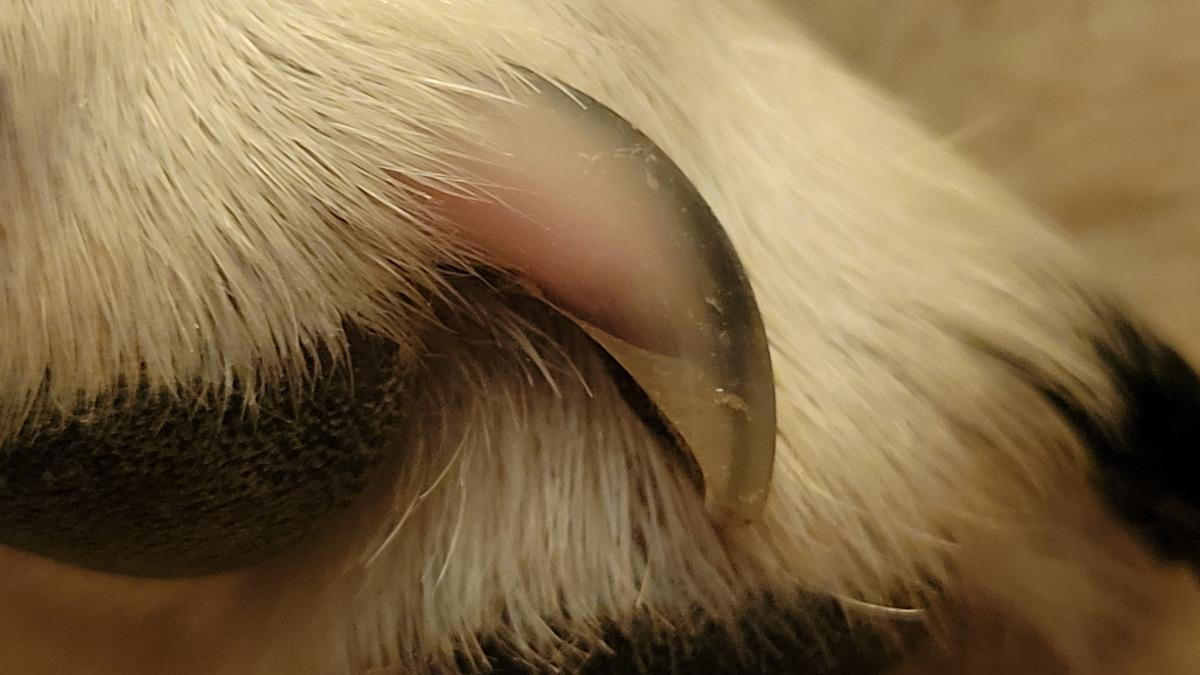Toenail Troubles

- posted: Jul. 28, 2023
Toenail Troubles
Just like people, dogs, cats and many other animals have nails or claws on the tips of their toes. Nails serve multiple functions including:
Protection: Toenails act as a protective sheath for the tips of the toes which helps to shield sensitive tissues and bones in the paws from injury and damage.
Traction: Nails provide a better grip on various surfaces, allowing cats and dogs to walk, run, and climb more effectively. Animals such as birds, reptiles and rodents may also use their nails to aid in climbing or digging.
Hunting and Defense: In the wild, cats and dogs rely on their sharp claws to capture and hold onto prey. Additionally, these nails can be used for self-defense when faced with threats or during territorial disputes.
Most pets need some assistance in keeping their nails trimmed and healthy-can you imagine if you never trimmed your fingernails or toenails? Pets’ nails grow similar to our own, though the shape of their nails is more cone-like. Keeping nails trimmed on a regular basis is key. Most pets need to have their nails trimmed every 4-8 weeks depending on the species and how quickly the nails grow.
Injured or broken toenails are a common medical condition, especially in dogs, and nail injury happens more frequently when nails are too long and catch on something and break. A minor break should no cause any issues. However, if the break occurs in the area where the sensitive tissue and blood vessels called the “quick” is located, pain, bleeding and, in some cases, infection can result. If your pet breaks a nail and is bleeding or limping, don’t panic! It looks like a lot of blood, but a pet is unlikely to lose enough blood to experience serious complications from a broken toenail. Apply a clotting stick or powder to the nail if available or try cornstarch or flour in a pinch. Wrap the paw if needed, but be sure not to wrap it too tight. It’s best to seek veterinary attention for a broken toenail within a day or two, but it is not usually a true emergency. Your veterinarian will likely sedate your pet to safely and painlessly remove the broken nail and control bleeding. Often, the entire nail needs to be removed or cut short to the base, and this hurts! A sedated pet will not feel the pain of treating the broken nail. Your pet will likely be sent home with some pain medication and possibly an antibiotic if there is concern for infection.
Pets can also have ingrown nails that curl around and push into the toe pads. This occurs most frequently in the dewclaws—small claws or “thumbs” found on the inner surface of many dogs and all cats. Older cats may also experience thickened, ingrown toenails as they are less adept at grooming and caring for their nails. These nails should be trimmed and any wounds on the pads attended to. Pets may need antibiotics to treat or prevent secondary infections.
Nail bed infections can also occur including bacterial or fungal infections which can weaken the nails or cause them to become brittle and fall off or break. Nail bed infection can be painful and these infections can take a long time to treat and may cause permanent damage to the nail beds and toenails but most can be treated with proper anti-fungal drugs or antibiotics depending on the nature of the infection.
Keeping toenails trimmed on a regular basis for your dog, cat, bird, reptile or pocket pet is an important part of keeping them groomed and healthy. An remember to seek veterinary care if your pet does experience an issue with his or her toenails for proper treatment but that nail injuries are not typically emergencies.
This blog brought to you by the Patton Veterinary Hospital serving Red Lion, York and the surrounding communities.
Location
Patton Veterinary Hospital
425 E Broadway
Red Lion, PA 17356
